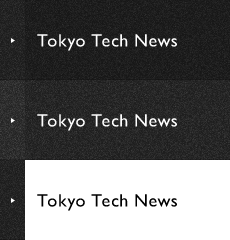"Science and Engineering Communication Project" launched this summer
Published: September 3, 2013

Group work on July 3

High school students constructing a bridge according to SECP blueprints

The durability test on July 24
Kana Nishino, Associate Professor & International Cooperation Planner International Office, Tokyo Institute of Technology
This summer we launched a new, trial TIER Summer Program class, the Science and Engineering Communication Project (SECP), for TiROP and CAMPUS Asia summer program participants. The goal of the class was twofold: simulate international collaboration that might be found in a laboratory at a leading global university or research institution and allow students to develop team and leadership skills necessary for working in the global environment.
SECP is grounded in the learner-centered style of teaching where the instructor facilitates and students take an active role in their knowledge acquisition. When a student or scholar goes abroad to study or conduct research, he or she steps into a different culture and has to communicate and work with people with different ideas and different cultural assumptions to achieve common goals. Communication skills, negotiation skills and leadership skills are important in such circumstances and these are very difficult to teach in a typical teacher-centered or top-down learning environment.
SECP was designed to meet these needs in our increasingly interconnected and collaborative world. As this year's theme, "Making a Straw Bridge" was selected for the group project around which the students would develop their ideas and strategies for both construction of the bridge and communication. Not only would the groups of international students from 8 countries have to communicate with each other to design a bridge, but they would have to communicate how to build it to visiting Japanese high school students who would then construct it. Three "Bridge Policies" were set and the six groups of international and Tokyo Tech students welcomed 4-5 high school students into their groups and taught them in English how to construct the bridge they designed. All of the students enjoyed themselves immensely as they competed for points in the areas of "Our Cost Effective Bridge,", "Most Aesthetically Pleasing Bridge" and "Most Durable Bridge."
The course had four formal weekly meetings starting on July 3 and finishing on July 24 with the competition and outreach in English to 26 local high school students. The high school students enjoyed a campus tour of Tokyo Tech in the morning and then joined one of the six groups as described above for an afternoon of fun and hands-on activities.
Feedback from the international students has been very positive, represented by this comment: "I had a great time communicating with the International as well as Japanese students."
As a final remark, SECP was interesting to design as it provided an opportunity to discuss many things with colleagues. I believe the SECP class has the following strengths.
- Facilitated communication and interaction opportunities with Japanese students, both Tokyo Tech students and Japanese high school students, while introducing Japanese culture
- Provided a hands-on project with a goal to encourage teamwork among team members
- Introduced students to what international research collaboration might be like.
I very much hope we will run another SECP class next year.
. Any information published on this site will be valid in relation to Science Tokyo.





